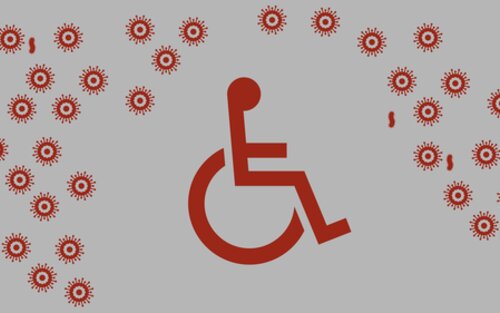Kenyans with disabilities are facing many challenges when it comes to adhering to protocols laid down by the Government to fight the coronavirus.
According to the Open Institute Trust, Persons with disabilities are struggling to obey several measures, among them the social distancing rule.
In describing the challenge, the Trust says that persons with disabilities, especially those who rely on others for daily living, are finding themselves without support due to movement restrictions and physical distancing measures.
“On a normal day, persons with visual disabilities and wheelchair users rely on a personal aide or the goodwill of touts to board a matatu. Yet one measure to avoid COVID-19 is to avoid being touched. But for a wheelchair user to get into the matatu, they will require assistance because public transport in the country is not accessible for all. Wheelchair users also run an increased risk of their wheelchairs being contaminated with the virus by somebody who might be assisting them,” the Trust finds.
Persons with disabilities are also short changed when it comes to the use of Personal Protective Equipment (PPE). According to the Trust, the Government has not taken into consideration the Deaf community who primarily rely on lip-reading as a means of communication when it comes to wearing face masks.
Another challenge that persons with disabilities in the country face has to do with the use of technology. As per the finding, many children with disabilities are unable to extend their education through online learning.
“Many parents do not have access to smart devices or the internet, and if they do in many cases their children with disabilities will need more time to be oriented on how to use these devices and the internet for daily learning. Thousands of children with visual disabilities now have no access to assistive devices like Braille paper and Braille readers at home.”
Persons with disabilities also have a problem with beating the curfew. The finding by the trust says the panic and chaos occasioned by meeting the deadline disorients those caught up in the rush.
The Trust’s findings are in line with those of the World Health Organization.
According to the organization, persons with disabilities face specific barriers in carrying out their daily lives in the community due to COVID-19 response measures. In particular, the organization says that stay at home restrictions implemented by governments do not consider their needs and end up creating disruptions and new risks to their autonomy, health and lives.
Data released by the Kenya National Bureau of Statistics estimates that Kenya has about 918,270 persons aged 5 years and above with disabilities.
Margaret Njugunah

